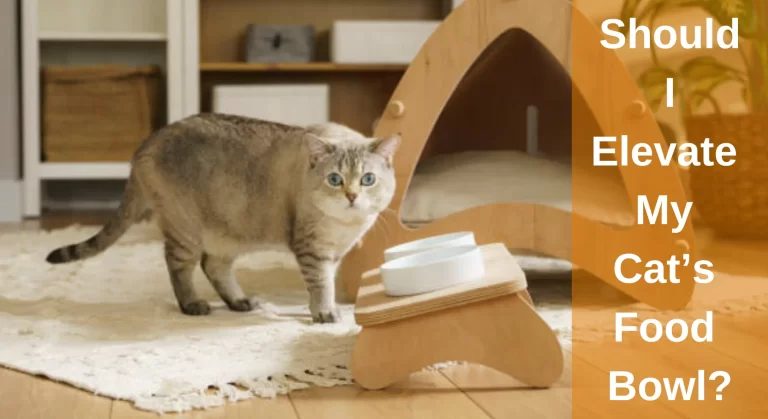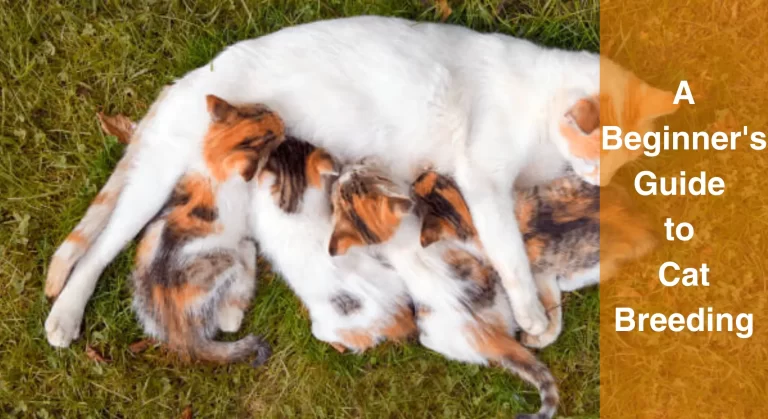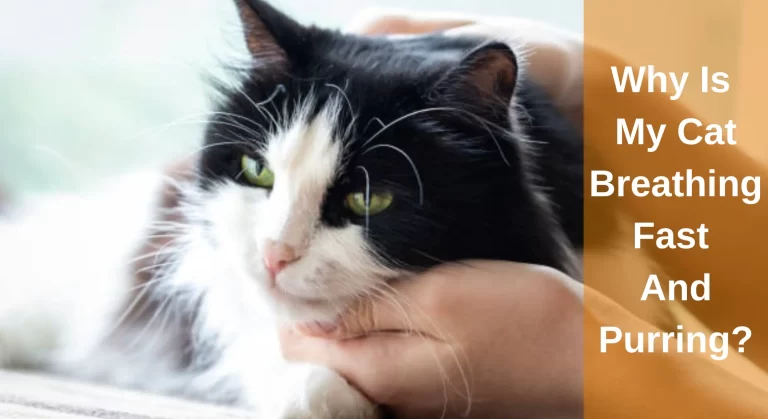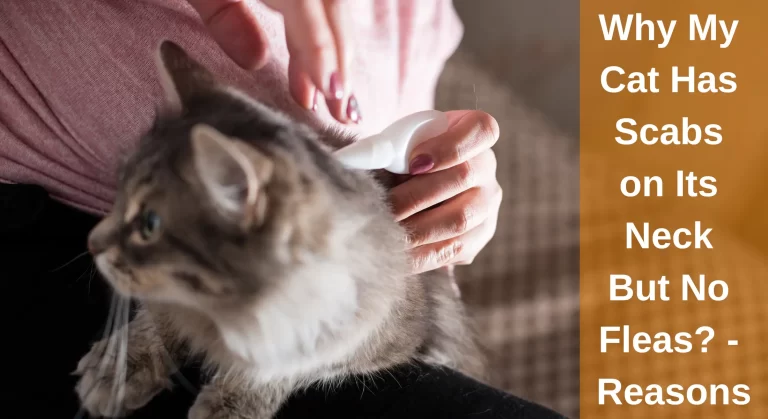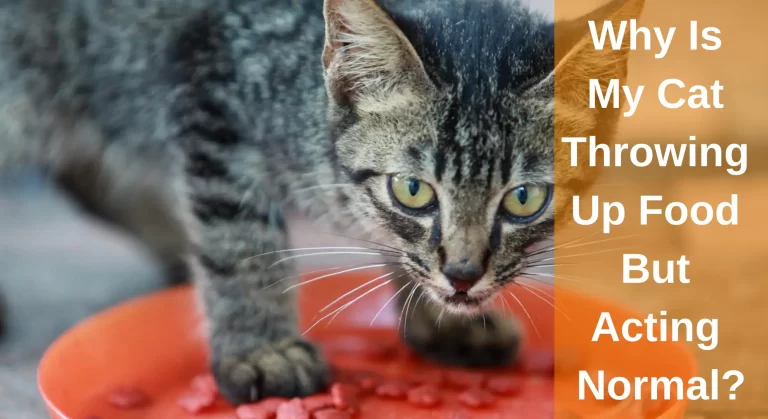Overgrown Cat Claws: Do Overgrow Nails Hurt Cats
Overgrown cat claws are a common problem in senior cats, and in the worst scenario, they might twist into the paw pad and hurt the animal. Reduced grooming and activity levels in senior cats make the condition of onychauxis, an ageing-related thickening of the claw, worse.
If an ingrown claw is left untreated, your cat may endure pain and go on to suffer from ulcers, infections, lameness, and other serious problems. Fortunately, you can quickly and effectively treat ingrown nails to keep your dog’s feet safe.
This article will discuss the issue of your cat’s overgrown claws and potential treatments.
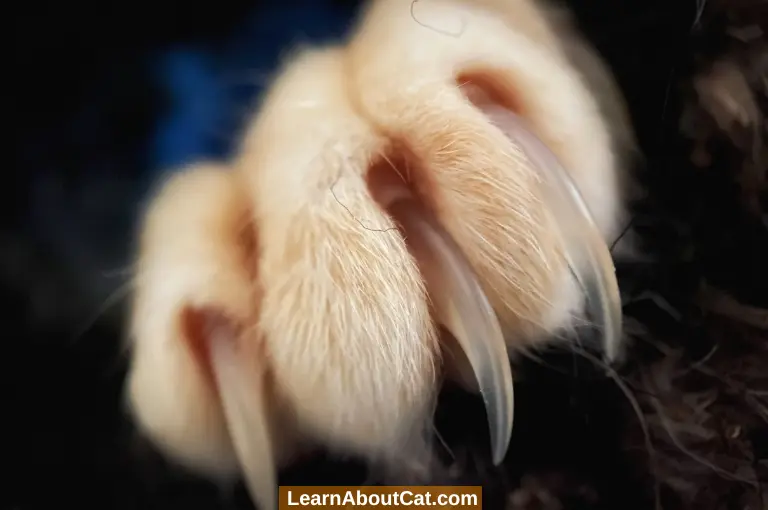
Why Are My Cat’s Claws So Thick?
A cat’s nails naturally wear down as they are used. Regular nail cutting is essential because untrimmed nails can curl over and irritate a pet’s delicate skin, leading to infections as well as ulcers.
Dewclaws, the higher-up nails on a pet’s legs that never make contact with the ground and usually fall out, are particularly prone to ingrown nails.
Cats may have twisted and bent nails that might grow inward if their toes are deformed or their nails are incorrectly positioned.
Because elderly cats tend to have less active lifestyles and have more delicate, unevenly developed nails, they are more susceptible than younger cats to developing ingrown nails.
Cats with long hair and cats with additional toes are more likely to have nail issues.
The claws that you saw no longer slough off their outer coverings. A cat develops by replacing its claws from the inside out.
Behind the dull exterior layer, the razor-sharp claw is revealed. Scratching by your cat contributes to this never-ending process.
They aren’t attempting to damage you again by grabbing things with their claws; that much is clear. Cats groom themselves and shed their sheaths with their claws.
Cats that are older typically have sharp claws. As cats age, their claws develop more quickly and are harder to shed. When the cat doesn’t use a proper scratching surface frequently enough or when claws aren’t cut frequently enough, issues might arise. Your cat should have his nails clipped frequently, even the stronger ones, and he should have plenty of enjoyable places to scratch.
Also Read: A Guide To – How To Heal Dry Cat Paw Pads?
Cat Nail Overgrowth reasons
Cats may get overgrown nails for a variety of reasons. Some cases are caused by nutritional deficiencies, while others are predisposed by genetics. Bone and joint growth may be impacted by poor nutrition. Other probable causes include hormonal imbalances, kidney disease, diabetes, thyroid problems, allergies, and skin infections.
Signs of Unusually Long Cat Nails
Your cat’s nails will develop at varied rates depending on factors including breed, age, diet, health, and level of activity.
However, cats often have nails that are around 2 inches long (5 centimeters). If your cat’s nails are longer than this, it may be a sign of a medical problem. So, watch out for any signs of discomfort or infection as well.
Find Out: Can Cat Paw Pads Change Color?
Do Overgrown Nails Hurt Cats?
Yes, cats may get hurt from having too many nails.
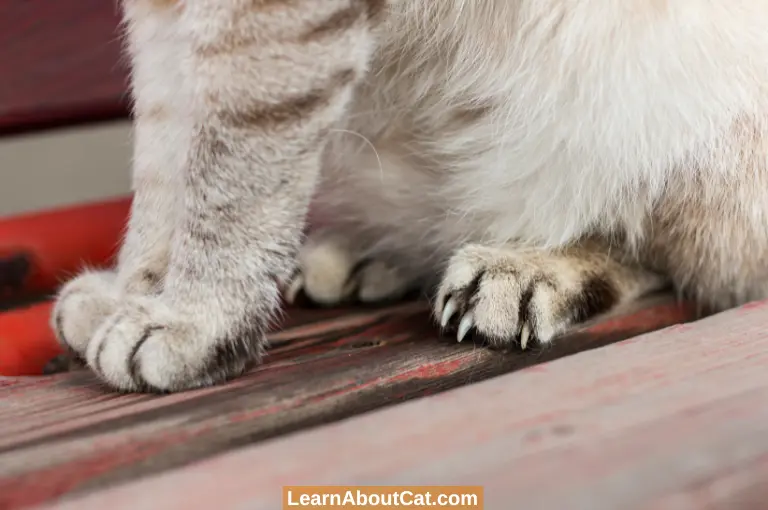
Over time, your cat’s nails could develop layers. In order to stop the nail from expanding inward and becoming painful, these layers must be routinely removed. Younger cats normally keep their nails short by scraping the layers off with scratching posts. Overgrowth leads to curled and partly retracted nails.
Your cat’s nails are too long if they start to snag on carpets or other soft surfaces or if she is unable to retract them. Not clipping cat nails can result in overgrown cat nails, which grow in a curve towards your cat’s paw pad.
An overgrown nail has the potential to pierce the paw pad, leading to painful sores, bleeding, and infection. If your cat licks its paws or bleeding, check its paws for nail wounds. Here, a veterinarian may be required to cut the nail.
Nails that are extremely overgrown and curled may penetrate the footpad, resulting in excruciating discomfort and limiting movement.
The ability to retract their claws may be harder for older cats than for younger cats. People are, therefore, more likely to harm their nails by getting them tangled up in carpet or furniture.
Broken nails are quite painful for cats, but they are readily avoidable by cutting the nails short and blunt.
Check Out: Why Are My Cat’s Nails Splitting?
Overgrown Cat Claws: What is the Best Way to Cut Them?
You must be very careful while clipping overgrown cat nails since the extra sheaths make your cat’s nail bed more sensitive. Even though cutting a cat’s claws might be difficult, if you compare it to something fun, like feeding, it will go more easily.
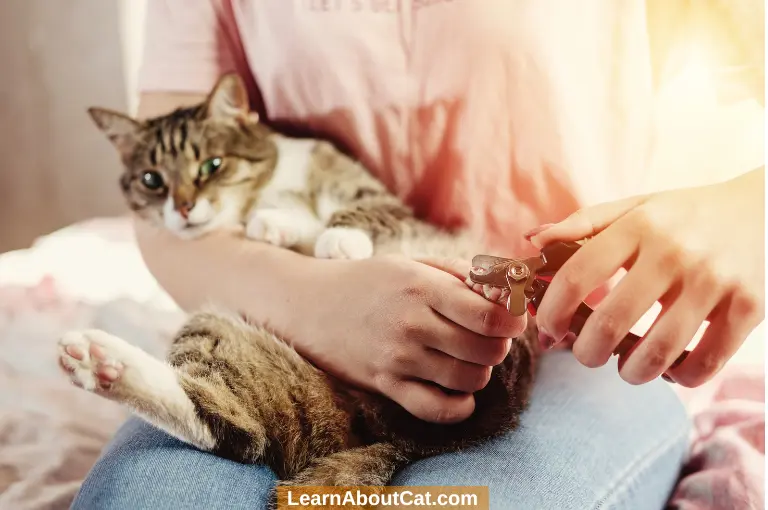
- After properly trimming at least one claw, always reward your cat with a treat.
- Hold the cat’s paw firmly in place between your thumb and fingers. To make the claw expand, gently press.
- Avoid making too many cuts while dealing with a combative cat.
- Owners should trim the tips of the front paws as your kitty friend takes care of their back claws.
- You may try to assist your cat in shedding those extra sheaths by filing down larger nails but proceed cautiously. The fact that the unshed sheaths are pressing into his nail bed certainly makes it pretty sensitive.
- It could be terrible merely to feel his claw flex between your fingertips. Reward your cat for his patience and complete the task quickly if you can.
- All cats require a great horizontal scratcher, a vertical scratching post that is at least twice their shoulder height, and regular grooming.
- Also, think about the kind of surfaces cats could encounter in the wild; the scratching surface should be placed near the tree bark as close as possible.
- Several possibilities include sisal, corrugated cardboard, and Berber carpet. Posts with plush carpets should not be used. They attract people more than cats do.
Assume your cat has access to scratching posts and that his nails have been properly clipped. So what follows?
It is best to keep those bigger nails clipped if your cat no longer seems to be in pain. It’s time to take him to the veterinarian if he is scraping at his claws. Contact your veterinarian as soon as possible if you have any cause to suspect that a claw has been ingrown in any way.
Can Overgrown Nails be Stopped Before They Begin?
Nail’s growth can be halted with little effort. But, make sure that your cat’s nails are routinely clipped. This will ensure that, as was indicated before, your cat’s nails remain healthy and well-trimmed.
Keep in mind, that your cat can’t access any hard surfaces. Beds, tables, counters, and floors are all included in this.
Last but not least, consider getting your cat’s nails clipped if you see that she is persistently scratching.
How to Prevent Your Cat’s Nails From Growing too Long?
There are numerous ways to shield your body from the strong claws of your cat and stop its nails from getting too long.
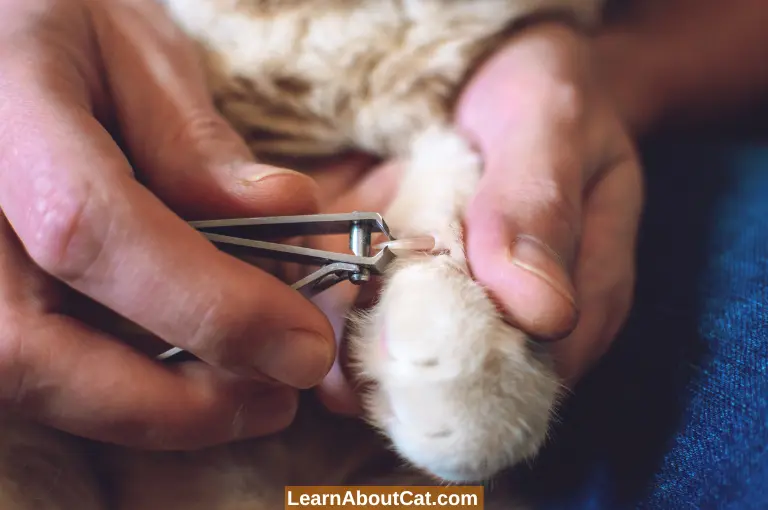
Below are just a few examples:
- Your cat’s claws remain healthy with regular trimming.
- Wear gloves to protect yourself from harm when touching your cat’s nails.
- Aim to just remove the nail’s tip from each one.
- At no point should you remove more than half of a nail.
- Being careful will help you avoid getting any nails under the skin.
- Never attempt to remove a nail. Instead, gently push the nail’s tip backwards until it comes out.
- Never try to clip a cat’s nails yourself without first talking to your vet.
- A carelessly cut nail may become infected quickly.
- If you are worried about how your cat might react to clipping her nails, get advice from your veterinarian.
- Your cat’s age, weight, and lifestyle will likely all play a role in the timeline he suggests.
- You may start doing your own nail clipping as soon as your cat feels secure in your presence. Also, sit him/her on your lap to feel him or them more comfortable.
- When you are holding her, it is easier to see what you are doing.
- Cut only the tips of each nail using tiny scissors.
- Remember to grasp the nail with your thumb and index finger.
What Indicates Ingrown Cat Claws?
If a cat claw has grown out of your cat’s foot pad, then its means he/she is in pain. It’s typical to observe folks hobble when this happens. Extraordinary paw licking, unusual-looking claws, uncomfortable claws, discoloured nails, pus discharge, bleeding, limping, edema, and inflammation around the nails, which may envelop the paw and foot, are further signs.
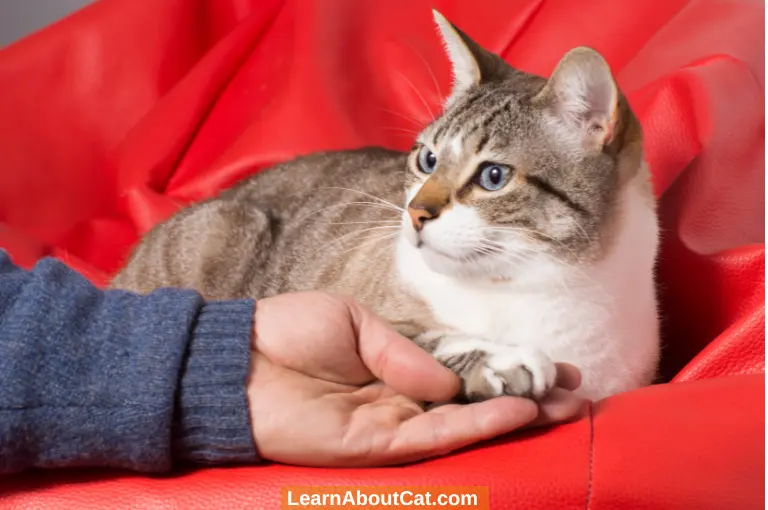
What Causes Ingrown Nails in Cats?
By moving around on a variety of surfaces frequently enough, cats can prevent developing ingrown nails.
- If you give your cat plenty of mobility on various surfaces, including asphalt, concrete, gravel, and other abrasive surfaces, their nails will stay naturally filed.
- To avoid too long nails, frequent trimming will be required. Within 1-2 months, the cat’s nails should be trimmed, considering the cat’s lifestyle, nail condition, and breed.
- If the cat’s toes are crooked or have another irregularity that puts them at risk for repeated ingrown nails, declawing the cat may be an option. Alternatively, those nails may need to be cut more frequently.
- To treat ingrown nails, look for nail overgrowth signs before.
- To make problems more obvious before they develop into sores, you can trim the lengthy hair on a cat’s foot.
- Ingrown nails in cats can be uncomfortable and dangerous, but these accidental wounds can be avoided with the right maintenance. Your cat can quickly stand up straight if it has an ingrown nail since it is quickly cured.
Frequently Asked Questions
The Bottom Line on Overgrown Cat Claws
Cats have always been popular as household pets. Their ancestors were wild cats that hunted prey while living in trees. Today’s cats still exhibit many of their basic tendencies. This suggests that kids are still playing with toys and looking for wildlife in the backyard. Do you remember the rat they gave you to take home? If a cat’s nails become too long or you suspect you are dealing with overgrown cat claws, it might be troublesome and make your cat feel awkward when walking. Furthermore, they could be prone to illnesses.
Fortunately, you can get rid of that sensation by cutting your pet’s nails in a variety of ways, whether you use a file, clippers, or a whole other approach. Always remember to see your local veterinarian if you have any questions. Also, keep an eye out for any infections in your cat’s claws that need immediate care from a veterinarian.
Who is Isabella?
My name is Isabella, and I am a dedicated and knowledgeable cat enthusiast. With years of experience caring for cats and a deep love for felines, I made a mission to help other cat lovers navigate the challenges of cat ownership.


